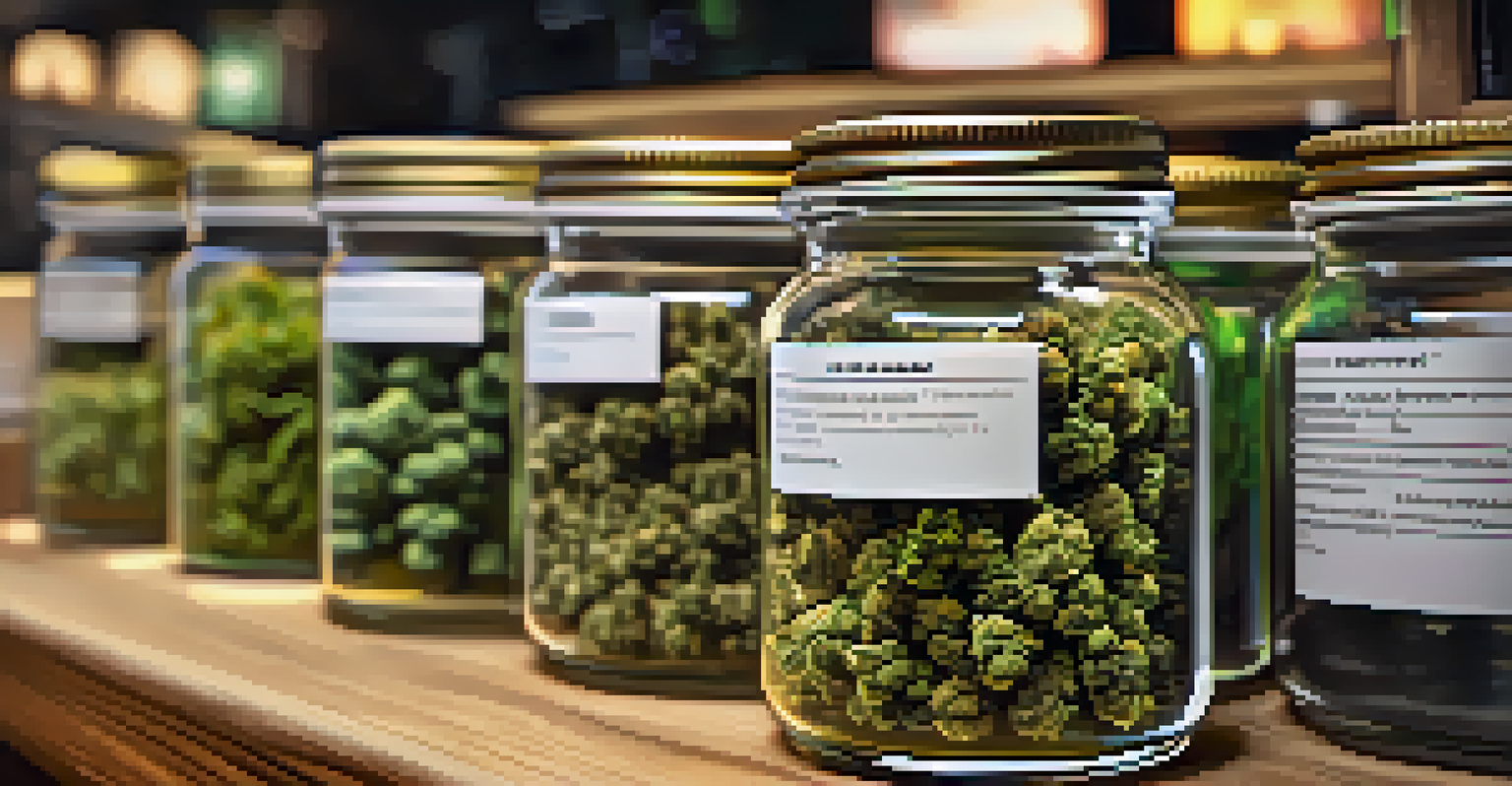Marijuana and Chronic Pain Management in Seniors

Understanding Chronic Pain in Seniors
Chronic pain is a common issue among seniors, often stemming from conditions like arthritis, neuropathy, or past injuries. It can significantly impact their quality of life, making daily activities challenging and affecting mental health. Many older adults find that traditional pain medications, such as opioids, can lead to unwanted side effects or dependency.
Chronic pain is a complex condition that often requires a multifaceted approach to treatment.
As people age, their bodies metabolize medications differently, which can complicate pain management. This is why many seniors are seeking alternative remedies that are both effective and carry fewer risks. Chronic pain can feel isolating, but understanding it is the first step toward finding relief.
Innovative approaches, including the use of marijuana, are gaining traction in pain management. As research continues to evolve, seniors are becoming more open to exploring cannabis as a potential option for alleviating their chronic pain.
The Role of Marijuana in Pain Relief
Marijuana has been shown to have analgesic properties, which means it can help reduce pain. Cannabinoids, the active compounds in marijuana, interact with the body's endocannabinoid system—a system responsible for regulating pain, mood, and other functions. This interaction can help ease discomfort without the side effects commonly associated with traditional painkillers.

For seniors experiencing chronic pain, marijuana can offer a more natural alternative. It can be administered in various forms, including oils, edibles, and vaporizers, providing flexibility in how it can be consumed. This versatility allows seniors to choose a method that best suits their lifestyle and comfort level.
Chronic Pain Affects Seniors' Lives
Chronic pain is prevalent among seniors and can significantly hinder daily activities and overall mental health.
Additionally, marijuana may help with other symptoms often associated with chronic pain, such as anxiety and insomnia. By addressing multiple issues simultaneously, it can enhance overall well-being, making it an attractive option for many seniors.
Legal Considerations for Seniors Using Marijuana
Before considering marijuana for pain management, seniors must be aware of the legal landscape in their state. Laws regarding medical and recreational marijuana vary widely, and understanding these regulations is crucial. In many places, medical marijuana requires a prescription from a licensed healthcare provider.
The evolving landscape of cannabis research offers hope for those seeking alternative pain relief options.
It's important for seniors to consult with their doctors about using marijuana, especially if they are currently taking other medications. This conversation can help ensure that there are no harmful interactions and that the chosen method of consumption is safe. Being informed helps seniors navigate the legalities and make educated choices.
Staying updated on changing laws is also essential, as legislation surrounding marijuana use is continually evolving. Engaging with local support groups or resources can provide valuable information and guidance.
Finding the Right Strain and Dosage
Choosing the right strain of marijuana is crucial for effective pain management. Different strains have varying levels of THC (the psychoactive component) and CBD (the non-psychoactive component), which can lead to different effects. For instance, CBD is often sought after for its pain-relieving properties without the high that THC produces.
Seniors should start with low doses and gradually increase as needed, paying close attention to how their body responds. Keeping a journal of experiences can help track which strains and dosages work best. This trial-and-error approach is vital in personalizing pain management.
Marijuana Offers Alternative Relief
Marijuana may serve as a natural alternative for pain relief, with various consumption methods that suit seniors' lifestyles.
Moreover, consulting with knowledgeable dispensary staff can guide seniors in selecting the most suitable strain for their needs. They can provide insights into the effects of different products, making the selection process easier and more informed.
Potential Risks and Side Effects of Marijuana Use
Like any medication, marijuana is not without its potential risks and side effects, especially for seniors. Some may experience dizziness, confusion, or impaired coordination, which can be particularly concerning for older adults. It's crucial to understand these risks and weigh them against the potential benefits.
Additionally, long-term marijuana use may lead to dependency or tolerance, meaning seniors might need to increase their dosage over time to achieve the same effects. Regular check-ins with healthcare providers can help monitor usage and address any concerns that arise.
Being aware of these risks allows seniors to make informed decisions about their pain management strategies. Open dialogue with medical professionals can ensure that marijuana use is both safe and effective.
Integrating Marijuana into a Holistic Pain Management Plan
Marijuana can be an effective component of a holistic approach to pain management. This approach often includes physical therapy, exercise, and mindfulness practices alongside other treatments. By combining various methods, seniors can create a more comprehensive strategy for managing their chronic pain.
Incorporating lifestyle changes, such as diet and exercise, can enhance the effectiveness of marijuana. Regular physical activity can improve mobility and reduce pain levels, making it easier to manage chronic conditions. Mindfulness techniques, like meditation or yoga, can also help alleviate stress and improve overall quality of life.
Legal and Dosage Considerations Matter
Seniors need to navigate legal regulations and consult healthcare providers to ensure safe and effective marijuana use for pain management.
Seniors should work closely with their healthcare providers to develop a personalized plan that considers their unique needs and preferences. This collaboration can lead to more effective pain management and a greater sense of control over their health.
Looking Ahead: Future Research on Marijuana and Pain Management
Research on marijuana and its effects on chronic pain management is still in its early stages, but the future looks promising. Ongoing studies aim to better understand how different strains and dosages impact pain relief, especially in older populations. This research will help clarify the most effective ways to use marijuana for chronic pain.
As societal attitudes continue to shift, more healthcare providers are becoming open to discussing marijuana as a treatment option. Increased funding for research will likely lead to more comprehensive data, enabling seniors to make well-informed decisions.

Ultimately, as our understanding of marijuana and its benefits grows, it may become a standard component of pain management strategies for seniors. This evolution could lead to improved quality of life and pain relief for many older adults.